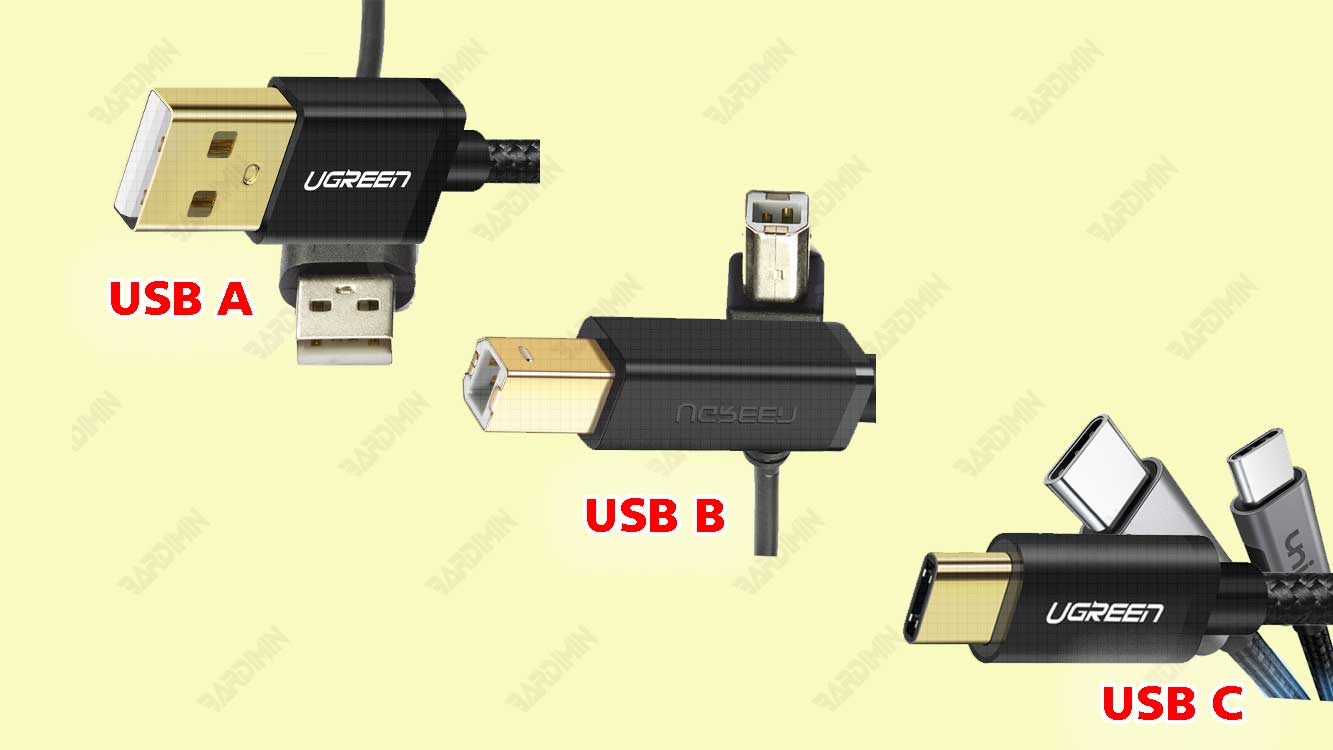USB (Universal Serial Bus) is a connection standard used to connect various electronic devices such as computers, mobile phones, printers, cameras, hard disks, and others. USB enables quick and easy transfer of data and power between devices.
However, not all USB cables and connectors are the same. There are several types of USBs that differ in terms of shape, size, speed, and function. This article will explain the differences between USB-A, USB-B, and USB-C, which are the three most common types of USB used today.

USB-A: The Most Popular USB Connector
USB-A is the type of USB that we most often encounter around us. The USB-A connector is rectangular in shape with one end slightly curved. This connector is usually found on the side of computers, laptops, power banks, chargers, and other devices that function as a power source or host. USB-A connectors can accept many other types of USB cables, such as USB-B, USB-C, micro-USB, and mini-USB, provided they have the appropriate ends.
USB-A has several versions that differ in terms of data transfer speed and power. The first version of USB-A was USB 1.0, which was launched in 1996. USB 1.0 has a maximum data transfer rate of 12 Mbps (megabits per second) and a maximum power of 2.5 W (watts).
The second version is USB 2.0, which was launched in 2000. USB 2.0 has a maximum data transfer rate of 480 Mbps and a maximum power of 2.5 W. The third version is USB 3.0, which was launched in 2008. USB 3.0 has a maximum data transfer rate of 5 Gbps (gigabits per second) and a maximum power of 4.5 W.
The fourth version is USB 3.1, which was launched in 2013. USB 3.1 has a maximum data transfer rate of 10 Gbps and a maximum power of 15 W. The fifth version is USB 3.2, which was launched in 2017. USB 3.2 has a maximum data transfer rate of 20 Gbps and a maximum power of 15 W.
To distinguish between different USB-A versions, there are usually color markings or symbols inside the connector. USB 1.0 and USB 2.0 are typically black or white, USB 3.0 is blue, USB 3.1 is red or purple, and USB 3.2 is green. In addition, USB 3.0 and above also have the SS (SuperSpeed) symbol next to the USB logo.
USB-B: USB Connector for Peripheral Devices
USB-B is a type of USB that is usually used to connect peripheral devices such as printers, scanners, monitors, external hard disks, and others to a computer or laptop. The USB-B connector is square with one side cut off.
This connector is usually located on the side of the peripheral device that serves as a target device or controlled device. The USB-B connector can only accept USB cables that have USB-B or mini USB-B ends.
USB-B also has several versions that differ in terms of data transfer speed and power, which is in line with the USB-A version. The first version of USB-B was USB 1.0, which had a maximum data transfer rate of 12 Mbps and a maximum power of 2.5 W.
The second version is USB 2.0, which has a maximum data transfer speed of 480 Mbps and a maximum power of 2.5 W. The third version is USB 3.0, which has a maximum data transfer speed of 5 Gbps and a maximum power of 4.5 W. The fourth version is USB 3.1, which has a maximum data transfer speed of 10 Gbps and a maximum power of 15 W. The fifth version is USB 3.2, which has a maximum data transfer rate of 20 Gbps and a maximum power of 15 W.
To distinguish between different versions of USB-B, there is usually a color mark or symbol inside the connector, which is the same as USB-A. USB 1.0 and USB 2.0 are typically black or white, USB 3.0 is blue, USB 3.1 is red or purple, and USB 3.2 is green. In addition, USB 3.0 and above also have the SS (SuperSpeed) symbol next to the USB logo.

